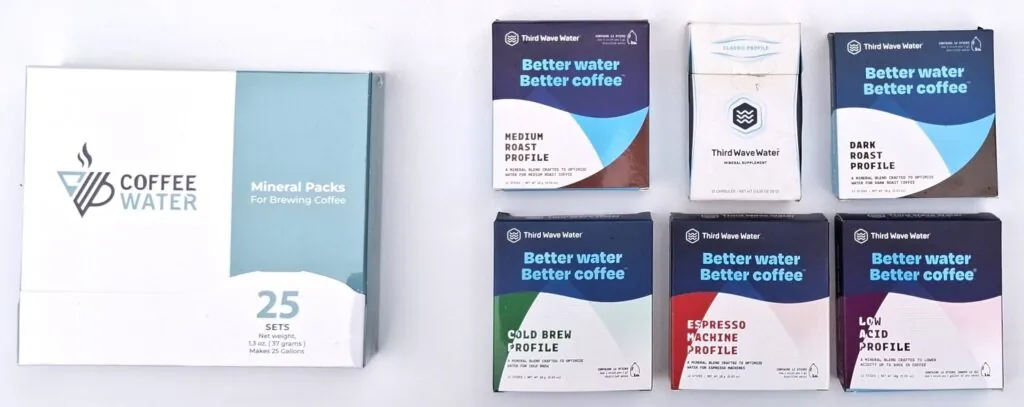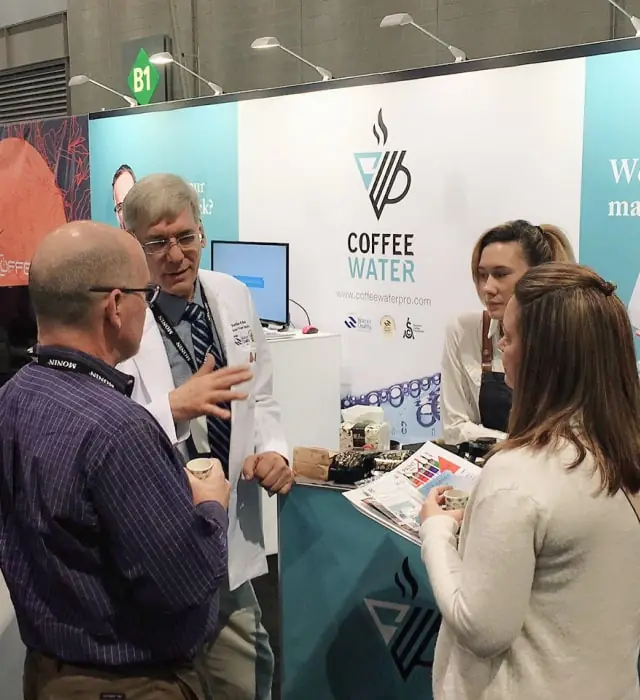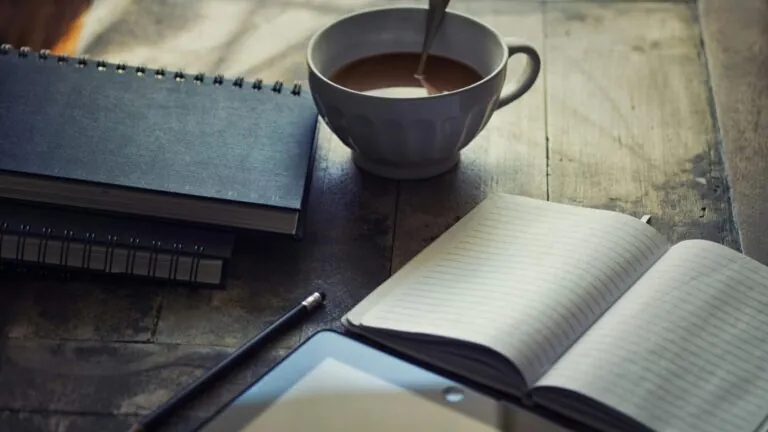Coffee Water vs. Third Wave Water: Which One is Best for Coffee?
If you’re looking for an alternative to Third Wave Water, Coffee Water’s well-balanced mineral formula may be just the solution you are looking for to brew exceptional coffee.
The Science Behind Coffee Water and Third Wave Water
In 2015, three-time UK Barista Champion Maxwell Colonna-Dashwood and MIT chemistry professor Chris Hendon published their groundbreaking book, WATER FOR COFFEE
This book significantly clarified many of the Specialty Coffee Association’s (SCA) guidelines for coffee brewing water, which are now widely recognized by coffee professionals worldwide.
Soon after, in 2017, both Coffee Water and Third Wave Water entered the specialty coffee market with products closely adhering to these guidelines. Third Wave Water made a very successful splash into the market with their appearance on Shark Tank in October 2017, while KofeSolutions introduced Coffee Water at the Coffee Expo Seoul in November 2017.
Lets take a closer look at how these two products compare.

Third Wave Water’s Roast-Specific Profiles
Original Classic Profile
Third Wave Water’s original Classic Profile was designed for lighter roasts, which gained popularity with the third-wave coffee movement. This profile, now called Classic Light Roast Profile, emphasizes high extraction and vibrant flavors but may have a slightly sharper taste due to its lower buffering capacity.
Five New Profiles
A few years ago, Third Wave Water introduced five additional profiles to cater to different brewing methods. What are the benefits of these variations?

Medium Roast, Dark Roast, and Espresso
During coffee roasting, sugars and chlorogenic acids break down into smaller compounds, making extraction easier for darker roasts. Since darker roasts extract more quickly, a lower mineral content is preferred to maintain balance. Third Wave Water’s Medium Roast and Dark Roast profiles adjust the mineral and buffering balance accordingly.
The Espresso Profile is similar in mineral content but contains slightly higher bicarbonate levels, creating a smoother espresso shot while ensuring machine safety.
For lighter roasts, which require more minerals for optimal extraction, the Classic Profile maintains a high mineral hardness level to enhance flavor, but due to its low amount of buffering, will be more acidic.
Cold Brew and Low Acid Profiles
One aspect that puzzled us was the high bicarbonate content in Third Wave Water’s Cold Brew and Low Acid profiles. While both contain balanced minerals (just below 100 ppm), their bicarbonate levels are unusually high—far beyond SCA recommendations.
Although this deviation from standard guidelines is surprising, these profiles may be ideal for individuals who are sensitive to acidity.
The Science Behind Coffee Water
Coffee Water’s formula is based on extensive research and a proven water source that has been successfully used in a leading coffee business for over 25 years. After more than a year of testing, we have developed what we believe is the ideal mineral composition for consistently brewing excellent coffee, regardless of brewing method.
For a deeper look into our research and formulation process, check out our blog post: How the Coffee Water Formula Was Crafted
A Surprising Discovery: It's Turning Into a Rock!
During our early testing phases, we encountered a surprising issue. After conducting test runs at local coffee shops, we discovered that over time, our formula’s minerals were taking too long to dissolve. Upon closer investigation, we realized that bicarbonate was reacting with the magnesium and calcium, forming a solid that took hours to dissolve.
To solve this problem, we developed our current two-packet system, ensuring optimal mineral solubility and stability.
Which One is Your Best Choice? Coffee Water or Third Wave Water?
Expert Insights: A Single Solution May Be Best
In WATER FOR COFFEE, Hendon and Colonna-Dashwood concluded:
“We explored the notion of differing ideal waters for espresso and filter. The suggestion was that espresso could handle or even benefit from a higher buffering water than filter. After thinking about this for many years, we have come to the conclusion that in principal this may work, but rather , this might be a gimmick that is both i) too much effort and ii) provides inferior results. This is why we have opted for a singular ideal brewing zone for both espresso and filter.” –WATER FOR COFFEE, 2015, p. 127.
Our Thoughts on Third Wave Water's Approach
While personal preferences vary, the core principles of water chemistry remain consistent. Third Wave Water’s Classic profile delivers a bright and full-bodied flavor, while the Espresso profile offers a creamier texture with machine-friendly mineral balance.
That said, we find that Third Wave Water’s Medium and Dark Roast profiles align more closely with the SCA’s Ideal Brew Zone, making them more versatile for multiple brewing methods.
However, we remain uncertain about the unusually high bicarbonate content in the Low Acid and Cold Brew profiles, as they can result in a flatter taste. Since these profiles cater to specific preferences, we leave it to the individual coffee drinker to determine their suitability.
Coffee Water: Your Best All-Around Choice
With a formula backed by extensive research and over 25 years real-world success in a thriving coffee business, Coffee Water stands out as the superior choice for any coffee enthusiast.
Beyond taste, Coffee Water is the more cost-effective and convenient option. When brewing coffee at home it can be surprising how quickly you can go through a gallon of water (or five gallons in a café setting). Coffee Water’s ability to produce 25 or 125 gallons per box not only saves money but also eliminates the hassle of frequent reordering.
We invite you to try Coffee Water and experience the difference for yourself!
Related Reading:





